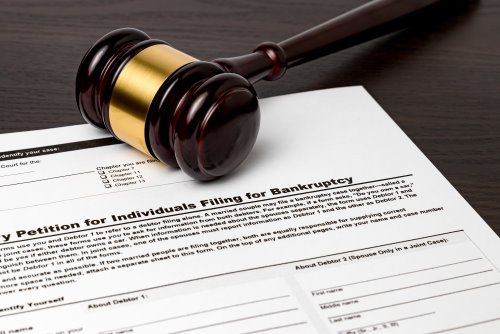What are Chapter 7 and Chapter 13?
Chapter 7 and Chapter 13 refer to sections of the U.S. Bankruptcy Code. The Bankruptcy Code has several other sections, but Chapters 7 and 13 provide individuals’ only options. Under Chapter 7, qualifying individuals can have their debts erased (or “discharged”)—subject to various exceptions, while filing under Chapter 13 allows individuals to “reorganize” their debts so that they can continue to pay them off over time.
“Discharge” vs. “Reorganization” in Bankruptcy
A common misconception about filing for bankruptcy is that it wipes the slate clean. While this is a possibility for some individuals, in most cases filing for bankruptcy does not result in the elimination of all debts.
Why? When a debt is discharged in bankruptcy, that debt is erased. You are no longer required to pay the creditor in question. However, there are various types of debts that are not eligible for discharge under Chapter 7. Specifically, debts that are generally protected from discharge under Chapter 7 include:
- Student loan payments
- Child support and spousal support payments
- Federal, state, and local taxes
- Debts incurred under pretenses or through fraud (i.e., if someone lies on their credit card application)
This is not a complete list, but these are the most common examples. Additionally, in some circumstances, it is possible to secure relief from student loans and tax obligations. When deciding whether to file under Chapter 7, you will want to work with your bankruptcy attorney to ensure you seek discharge of all of your eligible outstanding debt obligations.
If you file for bankruptcy under Chapter 13, instead of having some or all of your debts discharged immediately, your debts will be reorganized. You will still have to pay what you owe, but you will have a manageable payment plan that allows you to satisfy your debt obligations over time. At the end of your payment plan, you may be eligible to have certain debts discharged, but any debts you are required to “re-affirm” will remain. This does not afford the same debt relief as filing under Chapter 7, but it offers other benefits—as discussed in greater detail below.
As you can see, whether you choose to seek discharge under Chapter 7 or reorganization under Chapter 13, you will still have debts to pay (unless all of your debts are eligible for discharge under Chapter 7). This is important to understand as you move forward, and you will want to keep this in mind when thinking about which type of bankruptcy to file.
What are the Benefits of Filing for Bankruptcy Under Chapter 7?
The two main benefits of filing for bankruptcy under Chapter 7 (as opposed to filing under Chapter 13) are: (i) the discharge of eligible debts and (ii) timing. As discussed above, when you file for bankruptcy under Chapter 7, your eligible debts are discharged, which means that you no longer have an obligation to pay them. In terms of timing, the process of filing for bankruptcy under Chapter 7 can be over in as short as a few months. This means that you can start rebuilding your credit relatively quickly; and, by managing your finances carefully, you can get back on the road toward financial stability.
What are the Benefits of Filing for Bankruptcy Under Chapter 13?
The main benefit of filing for bankruptcy under Chapter 13 is that it allows keeping all of your property. If you file under Chapter 7, you will have to liquidate certain of your assets to pay your creditors to the extent you can. Some assets are exempt from liquidation in a Chapter 7 bankruptcy, but you generally will not be able to keep everything you own. If you establish a payment plan under Chapter 13, you get to keep everything as long as you make your payments on time.
Another benefit of filing under Chapter 13 is that your bankruptcy comes off of your credit report sooner. While a Chapter 7 discharge stays on your credit report for 10 years, a Chapter 13 reorganization stays on your credit report for seven years. This is still a long time, but when seven years are up, you might be happy that you chose to file under Chapter 13.
Which Bankruptcy Option Should I Choose?
Taking all of this into account, which bankruptcy option should you choose? Ultimately, you will need to make your decision based on several different factors. Most fundamentally, not everyone is eligible for discharge under Chapter 7. If you cannot satisfy the Chapter 7 “means test,” then your only option may be to file under Chapter 13. Basically, if your combined assets and income exceed a certain threshold, then you are ineligible to file under Chapter 7.
Beyond considering your Chapter 7 eligibility, it will also be important for you to consider questions such as:
- If you file under Chapter 7, which of your debts will be ineligible for discharge?
- If you file under Chapter 7, which assets will be at risk for liquidation?
- Is it important to you to restore your credit as soon as possible?
- Which debts will you be required to re-affirm if you file under Chapter 13?
- If you file under Chapter 13, how confident are you that you will make your monthly payments?
Schedule a Free Initial Consultation with a Plano Bankruptcy Lawyer
Do you have questions about filing for bankruptcy in Texas? If so, we encourage you to get in touch. To speak with a Plano Texas bankruptcy lawyer in confidence, please call 972-881-9700 or request a free initial consultation online today.

